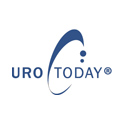TAIPEI, TAIWAN (UroToday.com) - Introduction and Objectives: Stone burden has been reported as an independent predictor of post-operative outcomes of percutaneous nephrolithotomy (PCNL). We aimed to identify the optimal method of measurement of stone burden to predict residual stone at 3 months post percutaneous nephrolithotomy (PCNL).
 Methods: We identified 246 PCNL’s from a prospective database from January 2006 to December 2013 that had a preoperative CT and post-operative follow-up data at 3 months available. Stone burden was assessed 3 different ways on reformatted coronal CT images: 1) elliptical surface area (SA) calculated as longest * perpendicular diameter * π /4; 2) manual outline of stone and computer SA calculation; 3) automatic 3D volume rendering and calculation using specific CT software. SA’s were reported in increments of 500mm2. Logistic regression, receiver operative characteristics (ROC) curve analysis and area under the curve (AUC) were used to evaluate the predictive value of each method.
Methods: We identified 246 PCNL’s from a prospective database from January 2006 to December 2013 that had a preoperative CT and post-operative follow-up data at 3 months available. Stone burden was assessed 3 different ways on reformatted coronal CT images: 1) elliptical surface area (SA) calculated as longest * perpendicular diameter * π /4; 2) manual outline of stone and computer SA calculation; 3) automatic 3D volume rendering and calculation using specific CT software. SA’s were reported in increments of 500mm2. Logistic regression, receiver operative characteristics (ROC) curve analysis and area under the curve (AUC) were used to evaluate the predictive value of each method.
Results: Our cohort had a mean age of 55.7 years, was 42.3% female and had an incidence of residual stone of 11.9%. All measurement methods predicted residual stone stone; OR1: 1.50, CI 1.20–1.87; OR2: 1.56, CI 1.12–2.08, OR3: 1.241, CI: 1.078– 1.427 respectively. AUC’s of ROC analysis were 0.680, 0.665 and 0.666 respectively, demonstrating almost equivalent predictive value of each measurement method.
Conclusions: We demonstrated that measuring the stone burden by manual outline or 3D volume assessment on reformatted NCCT images has no added value compared to orthogonal measurement with elliptical assumption.
Source of Funding: None
| Listen to an interview with Thomas Tailly, one of the authors of this study. |
Presented by Philippe Violette, Thomas Tailly, Brandon Nadeau, Yige Bao, Justin Amann, John Denstedt, and Hassan Razvi at the 32nd World Congress of Endourology & SWL - September 3 - 7, 2014 - Taipei, Taiwan
Western University, Canada


